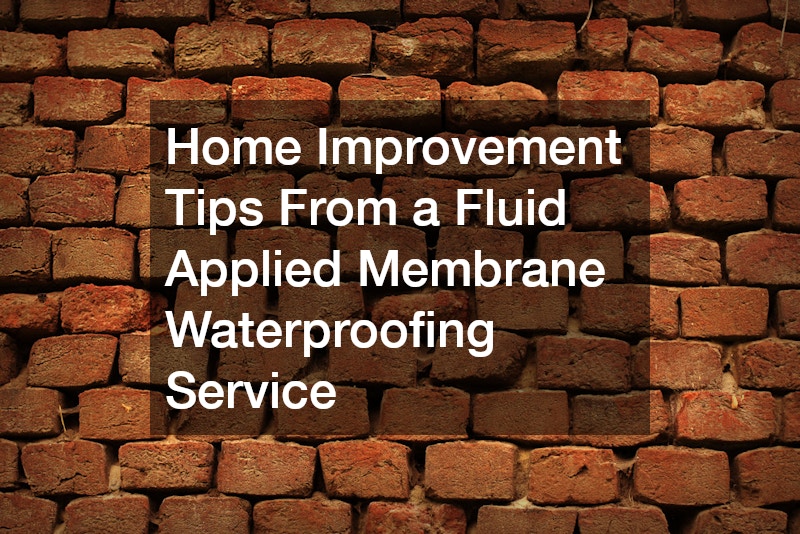

Welcome to our guide on home improvement tips from a fluid applied membrane waterproofing service. In this article, we will explore the benefits of using a fluid applied membrane for waterproofing, common issues faced by homeowners, and practical tips for successful waterproofing projects.
Understanding Fluid Applied Membrane Waterproofing
Fluid applied membrane waterproofing is a method used to protect buildings from water damage. It involves applying a liquid membrane to the surface, which forms a seamless barrier against moisture infiltration.
This type of waterproofing is commonly used on roofs, decks, and other outdoor surfaces.
One of the main advantages of fluid applied membrane waterproofing is its flexibility. The membrane can stretch and move with the building, preventing cracks and leaks caused by shifting or settling. This makes it a durable and long-lasting solution for waterproofing needs.
Many contractors recommend using a fluid applied membrane for waterproofing projects because of its ease of application. The liquid membrane can be sprayed or rolled on, creating a seamless and uniform protective layer. This makes it a cost-effective and efficient solution for homeowners looking to protect their properties.
Common Issues in Waterproofing Projects
One common issue in waterproofing projects is improper surface preparation. If the surface is not clean and dry before applying the membrane, it may not adhere properly and could lead to leaks. It is important to thoroughly clean and seal the surface before starting the waterproofing process.
Another common issue is using the wrong type of membrane for the project. Not all membranes are suitable for every surface or condition. It is essential to choose the right type of fluid applied membrane based on factors such as climate, exposure to UV rays, and the type of substrate being waterproofed.
Poor installation techniques can also lead to issues in waterproofing projects. If the membrane is not applied correctly or if seams are not properly sealed, water infiltration can occur. It is crucial to follow the manufacturer’s instructions and seek professional help if needed to ensure a successful waterproofing project.
Tips for Successful Waterproofing
One tip for successful waterproofing is to regularly inspect and maintain the membrane. Over time, the membrane may wear down or develop cracks, leading to potential leaks. By checking the condition of the membrane and repairing any damage promptly, you can extend its lifespan and prevent water damage.
Proper drainage is also essential for successful waterproofing. Make sure that water can easily flow away from the waterproofed surface to prevent pooling or standing water. You may need to install gutters, downspouts, or drainage systems to redirect water away from the building effectively.
Lastly, consider hiring a professional fluid applied membrane waterproofing service for complex or large-scale projects. Experienced contractors have the expertise and equipment necessary to ensure a high-quality and durable waterproofing solution. This investment can save you time and money in the long run by preventing costly water damage repairs.
Conclusion
By following these tips and understanding the importance of fluid applied membrane waterproofing, you can ensure a successful home improvement project that will protect your property for years to come.
.



